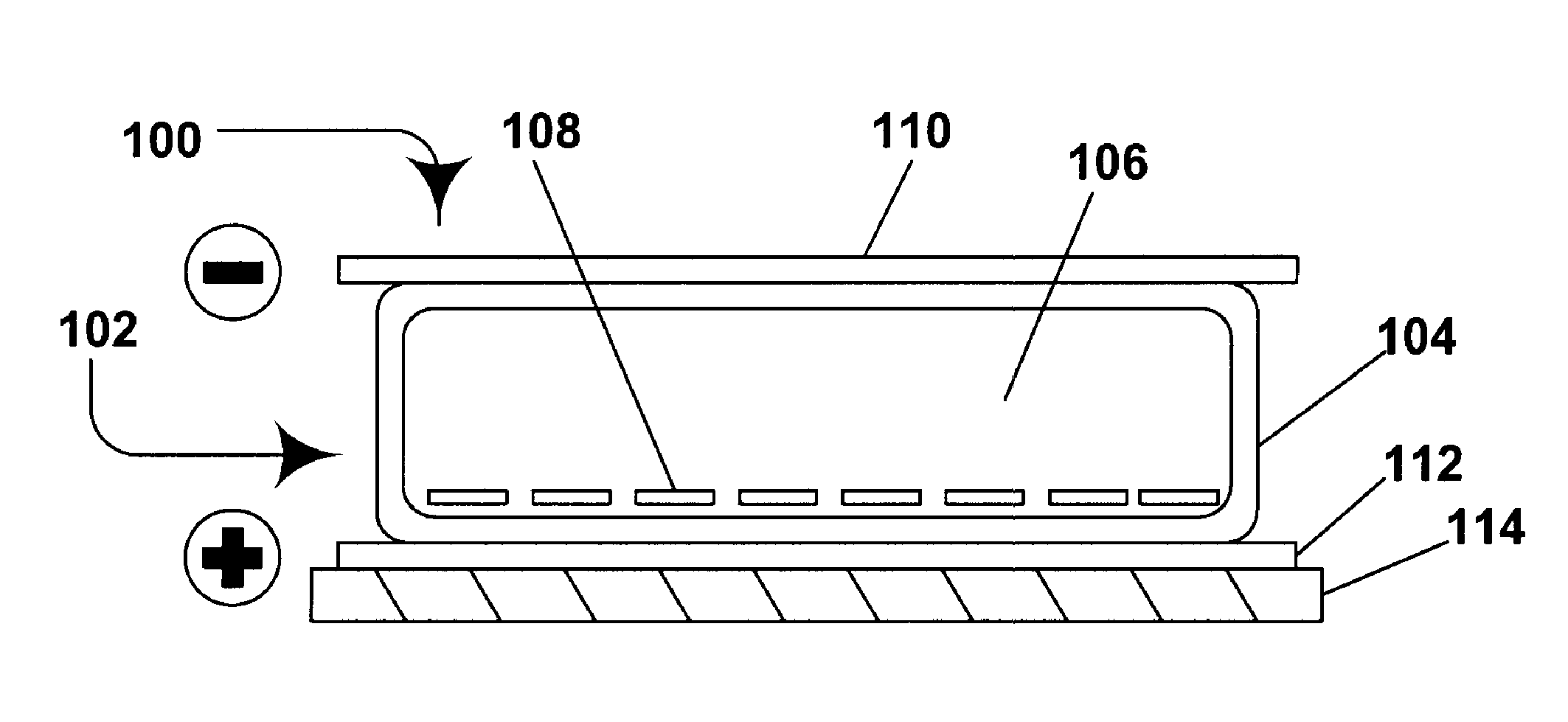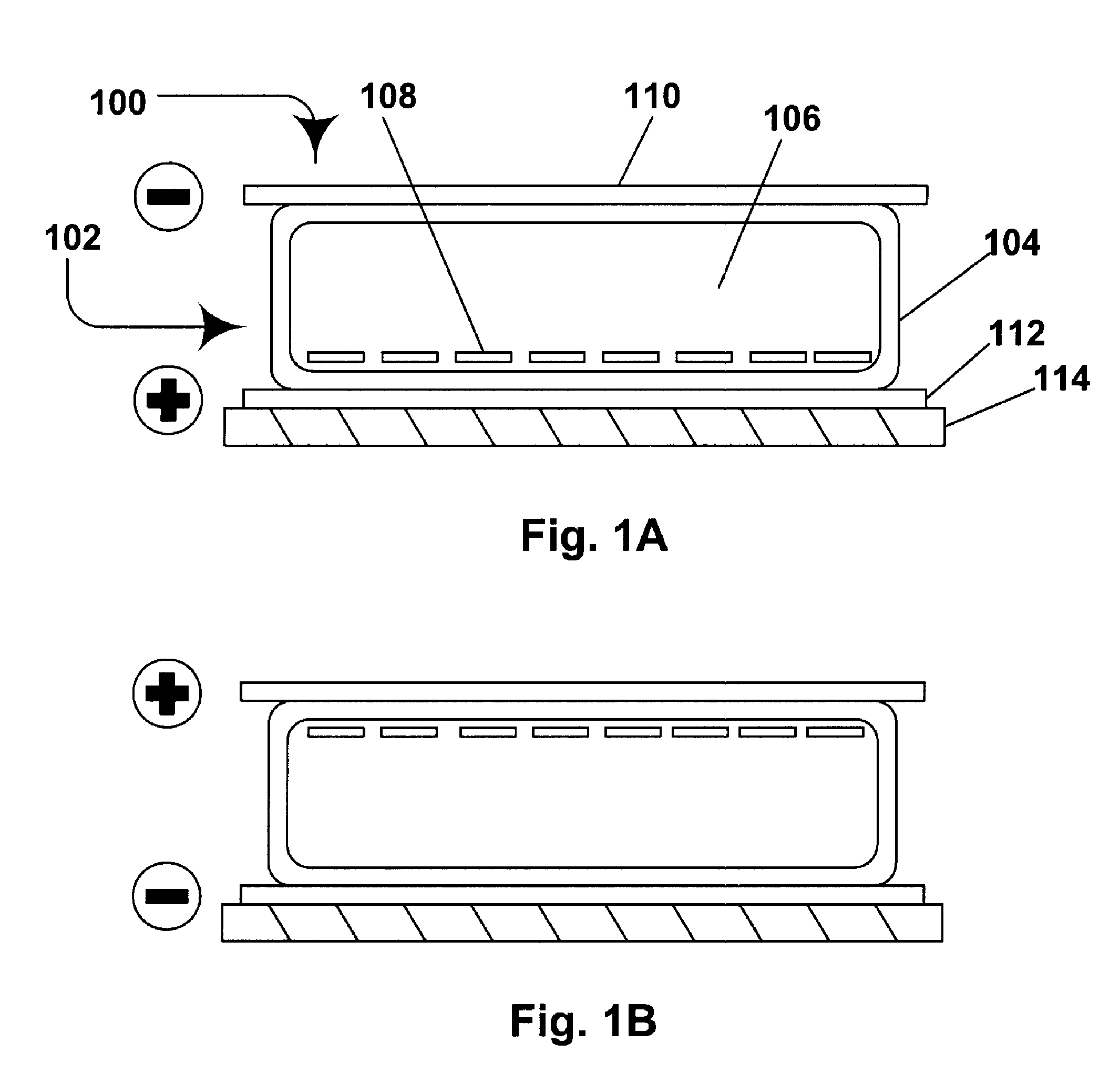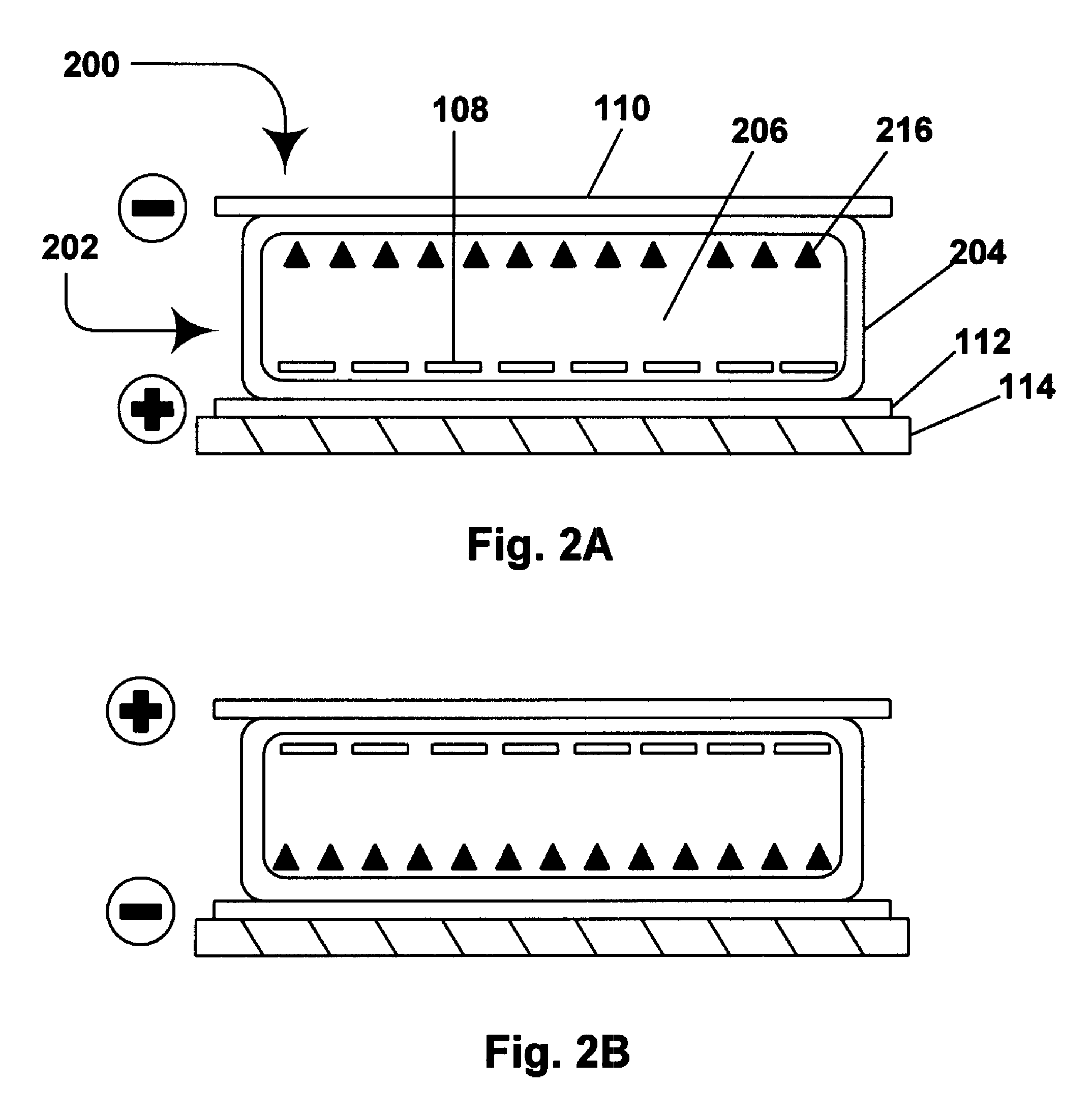Electrophoretic media containing specularly reflective particles
a technology of specular reflective particles and electrophoretic inks, applied in the field of electrophoretic media, can solve the problems of insufficient service life of these displays, inability to achieve uniformity and quality of electrophoretic ink materials, and inability to contribute to display brightness, etc., to achieve the effect of improving surface leveling, and reducing the number of spherical particles
- Summary
- Abstract
- Description
- Claims
- Application Information
AI Technical Summary
Benefits of technology
Problems solved by technology
Method used
Image
Examples
example 2
[0114] This Example illustrates reaction of the silica-coated pigment prepared in Example 1 with a bifunctional reagent in the first stage of a process to provide a positively-charged, polymer-coated specularly reflective particle useful in the electrophoretic media and displays of the present invention.
[0115] To a mixture of ethanol (1000 ml) and water (100 ml), concentrated ammonium hydroxide was added (about 12 ml) until the pH reached 9.0-9.5, N-[3-trimethoxysilyl)-propyl]-N'-(4-vinylbenzyl)ethylene diamine hydrochloride (40 g of a 40 weight per cent solution in methanol) was added, and the resultant solution was stirred rapidly for 4 minutes. The silica-coated Mearlin MagnaPearl 3100 pigment (50 g) prepared in Example 1 was then added, and the mixture stirred rapidly for 7 minutes. The resultant suspension was poured into plastic bottles and centrifuged at 3500 rpm for 30 minutes. The supernatant liquor was decanted, and the silanized pigment re-dispersed in ethanol and centrif...
example 3
[0116] This Example illustrates reaction of the silica-coated pigment prepared in Example 1 with a bifunctional reagent in the first stage of a process to provide a negatively charged, polymer-coated specularly reflective particle useful in the electrophoretic media and displays of the present invention.
[0117] To a mixture of ethanol (415 ) and water (35 ml), 33% acetic acid (about 18 ml) was added until the pH reached 4.5, trimethoxysilylpropyl methacrylate (20 ml) was added, and the resultant solution was stirred rapidly for 4 minutes. The silica-coated Mearlin MagnaPearl 3100 pigment (50 g) prepared in Example 1 was then added, and the mixture stirred rapidly for 7 minutes. The resultant suspension was poured into plastic bottles and centrifuged at 3500 rpm for 30 minutes. The supernatant liquor was decanted, and the silanized pigment re-dispersed in ethanol and centrifuged at 3500 rpm on the same centrifuge for 30 minutes, and the liquid decanted. The washing was repeated, and t...
example 4
[0118] This Example illustrates conversion of the silanized pigment produced in Example 3 to the corresponding polymer-coated specularly reflective pigment.
[0119] The silanized pigment produced in Example 3 (50 g) was placed in a round-bottomed flask with toluene (50 g) and lauryl methacrylate (50 g). The resultant mixture was stirred rapidly under a nitrogen atmosphere (argon may alternatively be used) for 20 minutes, then slowly heated to 50.degree. C. and AIBN (0.5 g in 10 ml of toluene) added quickly. The suspension was then heated to 65.degree. C. and stirred at this temperature under nitrogen for a further 18 hours. The resultant viscous suspension was poured into plastic bottles, the flask being washed out with ethyl acetate to remove residual product and the ethyl acetate solution added to the bottles. The bottles were centrifuged at 3500 rpm for 30 minutes. The supernatant liquor was decanted, and the polymer-coated pigment re-dispersed in ethyl acetate and centrifuged at 3...
PUM
| Property | Measurement | Unit |
|---|---|---|
| aspect ratio | aaaaa | aaaaa |
| aspect ratio | aaaaa | aaaaa |
| length | aaaaa | aaaaa |
Abstract
Description
Claims
Application Information
 Login to View More
Login to View More - R&D
- Intellectual Property
- Life Sciences
- Materials
- Tech Scout
- Unparalleled Data Quality
- Higher Quality Content
- 60% Fewer Hallucinations
Browse by: Latest US Patents, China's latest patents, Technical Efficacy Thesaurus, Application Domain, Technology Topic, Popular Technical Reports.
© 2025 PatSnap. All rights reserved.Legal|Privacy policy|Modern Slavery Act Transparency Statement|Sitemap|About US| Contact US: help@patsnap.com



